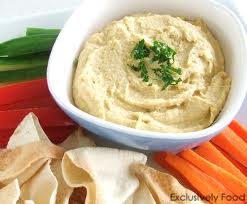 We all know that excess sugar in our diet can cause weight gain and lead to diabetes. But the latest research now reveals more serious effects of added sugar. Here’s the latest article by IDEA Health & Fitness Magazine…
We all know that excess sugar in our diet can cause weight gain and lead to diabetes. But the latest research now reveals more serious effects of added sugar. Here’s the latest article by IDEA Health & Fitness Magazine…
Now there’s another reason to encourage clients to limit their sugar intake: Eating added sugar is associated with increased risk of death from cardiovascular disease (CVD), according to a study published February 3 online in JAMA Internal Medicine. The study focuses on sugar added in the processing or preparing of foods, not naturally occurring sugars in fruits and fruit juices.
Recommendations for added sugar consumption vary, and there is no universally accepted threshold for unhealthy levels. For example, the Institute of Medicine recommends that added sugar make up less than 25% of total calories, the World Health Organization recommends less than 10% (but in March 2014 proposed a further reduction to below 5% for additional benefits), and the American Heart Association recommends limiting added sugars to less than 100 calories daily for women and 150 calories daily for men, according to the study background.
Quanhe Yang, PhD, of the Centers for Disease Control and Prevention, in Atlanta, and colleagues used national health survey data to examine added sugar consumption as a percentage of daily calories and to estimate association between consumption and CVD.
How Much Sugar Are We Eating?
Study results indicate that the average percentage of daily calories from added sugar increased from 15.7% in 1988–1994 to 16.8% in 1999–2004, but decreased to 14.9% in 2005–2010.
In 2005–2010, most adults (71.4%) consumed 10% or more of their calories from added sugar, but for about 10% of adults it made up 25% or more of their calories.
The Risks of Too Much Sweetness
The risk of heart-related death increases 18% for people consuming an average American diet with about 15% of daily calories from added sugar, compared with those whose diets contain little to no added sugar, the study authors found.
The risk is 38% higher for people who receive 17%–21% of their calories from added sugar, and more than double for people who get more than 21% of their daily diet from added sugar, Yang said.
Laura A. Schmidt, PhD, who wrote commentary on the published research, says, “Yang . . . shows that the risk of CVD mortality becomes elevated once sugar intake surpasses 15% of daily calories—equivalent to drinking one 20-ounce Mountain Dew soda in a 2,000 calorie diet. From there, the risk rises exponentially as a function of increased sugar intake, peaking with a [400% higher] risk of CVD death for individuals who consume one-third or more calories in added sugar.”
Another key point: The study found that the added sugar that Americans consume as part of their daily diet can—on its own, regardless of other health problems—more than double the risk of death from heart disease.
“[This] new paradigm [that Yang’s research falls within] hypothesizes that sugar has adverse health effects above any purported role as ’empty calories’ promoting obesity,” notes Schmidt. “Too much sugar does not just make us fat; it can also make us sick.”
Guideline for Better Health
So what is a good general guideline for sugar consumption? “Until federal guidelines are forthcoming, physicians may want to caution patients that, to support cardiovascular health, it is safest to consume less than 15% of total calories as added sugar,” says Schmidt.











